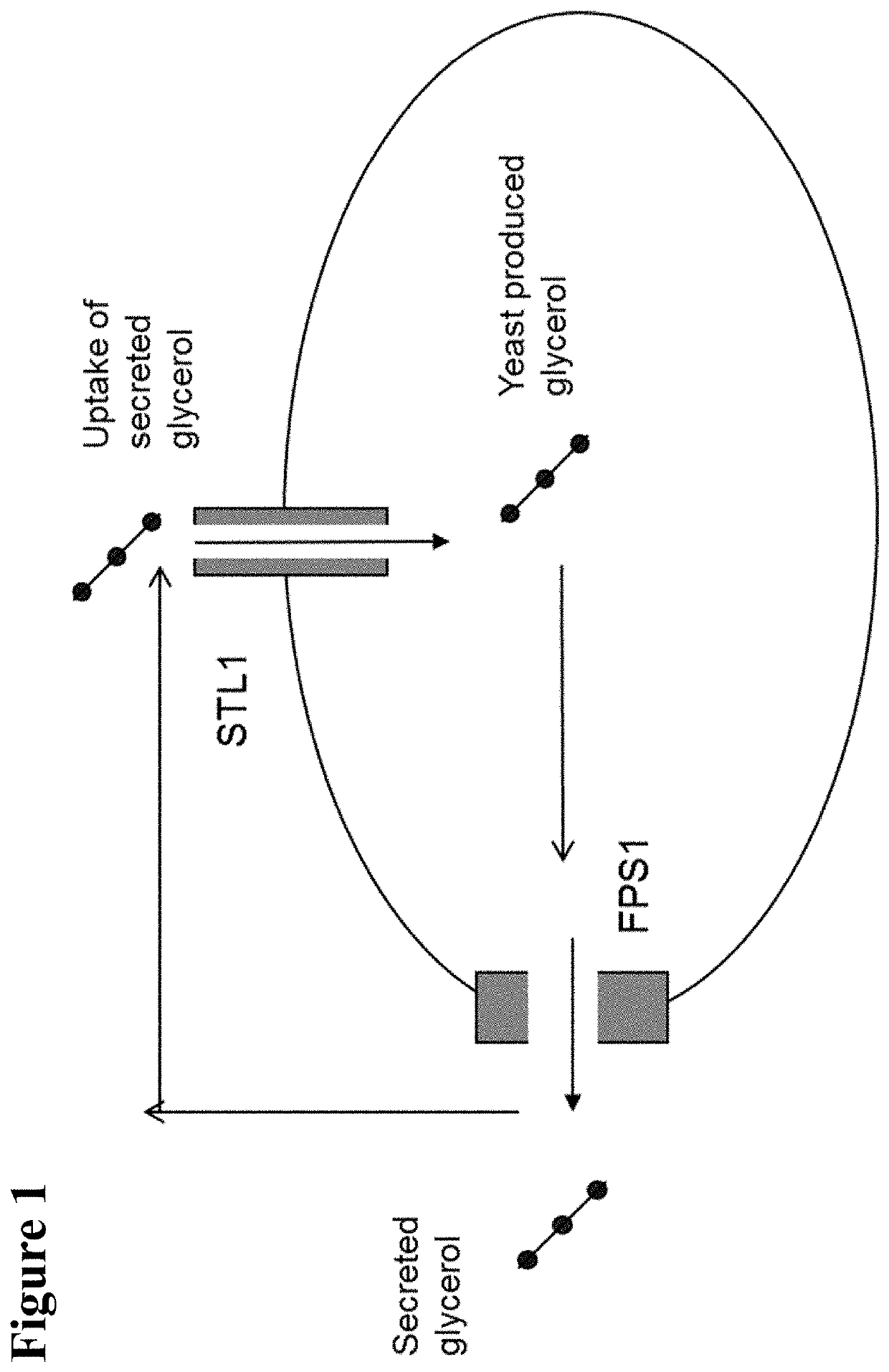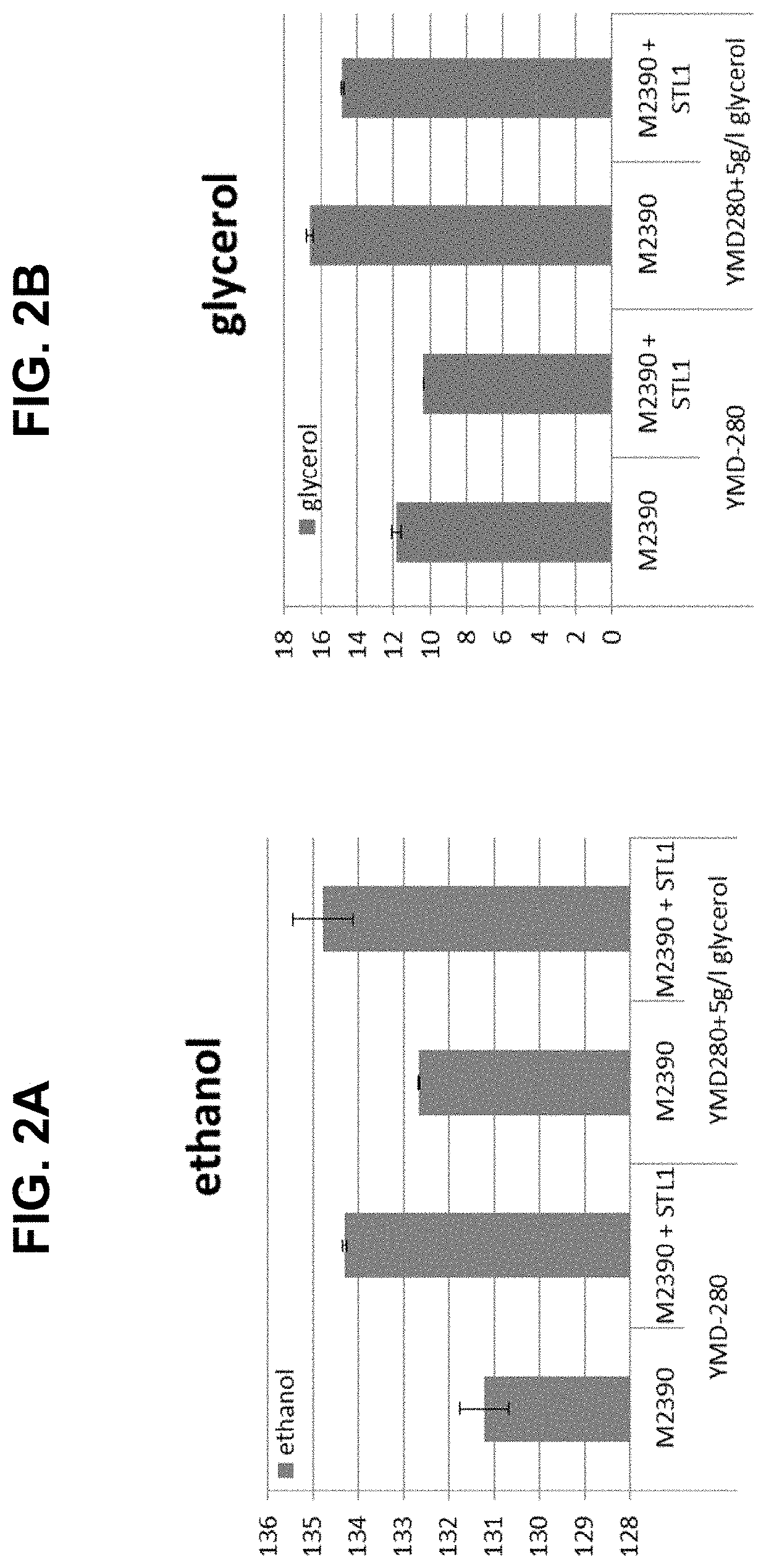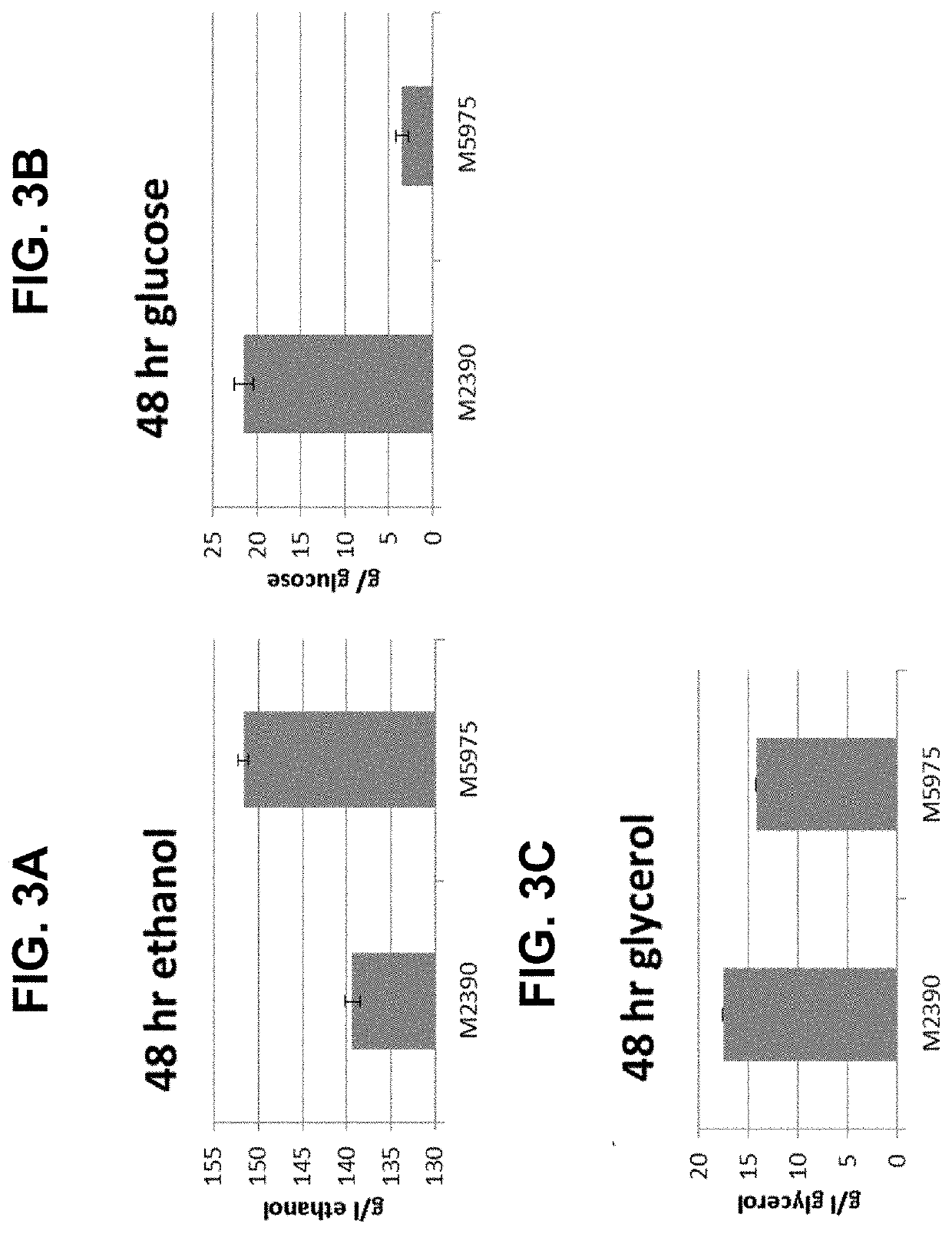Methods for producing isopropanol and acetone in a microorganism
a technology of isopropanol and acetone, which is applied in the direction of lyase, peptide source, transferase, etc., can solve the problems of preventing useful application during an industrial process, anaerobic growth of yeast, and unsatisfactory by, so as to reduce the requirement, reduce the requirement, and improve the robustness
- Summary
- Abstract
- Description
- Claims
- Application Information
AI Technical Summary
Benefits of technology
Problems solved by technology
Method used
Image
Examples
example 1
[0278]STL1 Overexpression in Wild Type Strain
[0279]An STL1 expression cassette comprising S. cerevisiae STL1 (FIG. 9 and SEQ ID NOs: 139 and 140) was genetically engineered into M2390 (Ethanol Red (new) from LaSaffre (pahc.com / Phibro / Performance-Products / Catalog / 23 / Ethanol-Red.html)) using the primers listed in Table 6 below. The transformed strain was compared to the non-transformed host strain M2390 during fermentation of laboratory medium YMD-280 (280 g / L maltodextrin, 20 g / L yeast extract, 2 g / L urea, 1 g / L citrate, + / 1 5 g / L glycerol) with or without externally supplied glycerol (5 g / L glycerol). YMD-280 medium with or without glycerol was inoculated with M2390 and M2390+STL1 to starting concentration of 0.1 g / L dry cell weight (DCW) and allowed to ferment for 72 hrs. Samples were withdrawn and metabolite concentrations where determined by HPLC. Ethanol concentrations were higher in the strains overexpressing the STL1 gene (FIG. 2A) when compared to the control strain. The incr...
example 2
STL1 Overexpression in Wild Type Strain
[0280]An additional fermentation was performed to determine the effect of STL1 expression in the wild type M2390 background using YMD-2300 medium (300 g / L maltodextrin, 20 g / L yeast extract, 2 g / L urea, 1 g / L citrate, 5 g / L glycerol). M2390 and M5975 (M2390+STL1) were inoculated into 50 mL of YMD-300 to a starting concentration of 0.1 g / L DCW and allowed to ferment for 48 hrs, at which point samples were withdrawn and metabolite concentrations where determined by HPLC. M5975 consumed significantly more sugar and reached a significantly higher titer of ethanol than the M2390 control strain (FIGS. 3A and 3B). Relative to M2390, expression of STL1 in M5975 resulted in extracellular glycerol concentrations that were reduced by 3.3 g / L (FIG. 3C).
example 3
Overexpression of STL1 in Wild Type Yeast Results in Higher Intracellular Glycerol Concentrations
[0281]An intracellular assay was used to determine whether expression of STL1 resulted in higher intracellular glycerol concentrations. Strain M5975 overexpresses STL1 due to engineering of STL1 into the FCY1 site on the S. cerevisiae chromosome (the same cassette as described above in Example 1). Both M2390 and M5975 were grown overnight in YPD medium (20 g / L peptone, 10 g / L yeast extract, 20 g / g dextrose), after which cells were harvested and quenched. See Gonzalez, et al., “A Rapid and Reliable Method for Metabolite Extraction in Yeast using Boiling Buffered Ethanol,”Yeast 13:1347-56 (1997). Briefly, cells were grown overnight in YPD and the culture was diluted to an OD660 of 1.9. Ten milliliters of ice cold methanol were added to 10 mL of the OD660 1.9 culture. The suspension was centrifuged at 5,000 RPMs for 5 min, after which the supernatant was discarded. To each pellet, 5 mL of b...
PUM
 Login to View More
Login to View More Abstract
Description
Claims
Application Information
 Login to View More
Login to View More - R&D
- Intellectual Property
- Life Sciences
- Materials
- Tech Scout
- Unparalleled Data Quality
- Higher Quality Content
- 60% Fewer Hallucinations
Browse by: Latest US Patents, China's latest patents, Technical Efficacy Thesaurus, Application Domain, Technology Topic, Popular Technical Reports.
© 2025 PatSnap. All rights reserved.Legal|Privacy policy|Modern Slavery Act Transparency Statement|Sitemap|About US| Contact US: help@patsnap.com



